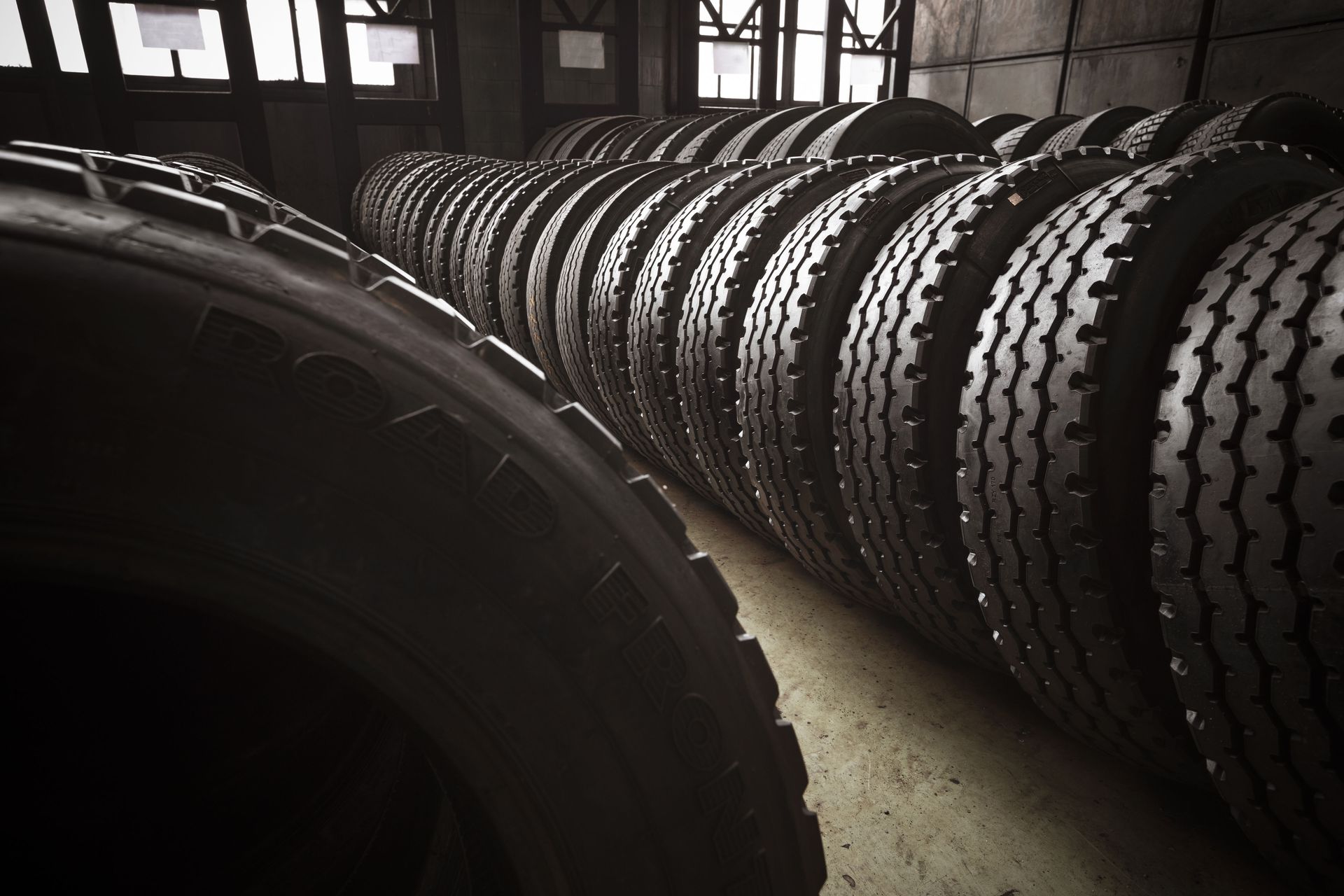September 8, 2025
Buying car tires is a critical aspect of vehicle maintenance and safety. However, there are certain aspects of tire selection and purchase that many drivers overlook. This article will explore those often forgotten areas and guide to help drivers make more informed decisions.
1. Tire Load Rating
Understanding Load Rating Basics
Tire load ratings are often overlooked but play a crucial role in ensuring the safety of your vehicle. The load rating determines how much weight a tire can safely support and is expressed on the tire sidewall. Without the correct load rating for your vehicle, you risk overloading your car tires, which can lead to undue wear and tear.
The Importance of Matching Load Rating to Vehicle Requirements
The load rating on a tire must match or exceed the specifications provided by the vehicle manufacturer. This is because improper matching can result in a myriad of issues including handling problems, increased stopping distances, and reduced tire life. Operating a vehicle with tires that have inadequate load ratings is not only dangerous but can lead to voided warranties or failed inspections.
How to Read Load Ratings on Tire Sidewalls
Understanding how to read tire sidewalls is essential to knowing a tire’s load rating. The load rating is part of a number that typically appears after the tire size, which is visible on the sidewall's outer rim. For example, in the sequence P215/65R15 95H, the '95' represents the load index, which corresponds to a value in load index charts that equates to the actual weight load capacity.
Consulting the Vehicle Manual for Specifications
Referring to the vehicle manual is an indispensable step when considering tire load ratings. The manual contains intricate details about tire specifications that optimize safety and performance, including the minimum load rating required. For accuracy, it provides the recommended tire specifications necessary for balancing load capacity with vehicle dynamics.
2. Tread Life and Wear Indicators
Deciphering the Treadwear Warranty
Treadwear warranties provide a measure of confidence in how long a tire should last. They are represented in mileage, indicating how many miles a tire is expected to last under normal driving conditions. Drivers should understand that warranties are estimates and actual tire life can vary due to driving habits, weather conditions, and terrain.
Identifying Tread Wear Indicators
Tread wear indicators are built into the tire to help drivers easily identify when it's time for replacement. Typically appearing as raised bars at the bottom of the tread grooves, these indicators reveal the minimum safe tread depth. According to Kelley Blue Book, most car tires are considered unsafe to drive on when the tread depth is under 1/16 of an inch.
Factors Affecting Tire Tread Longevity
Several factors can significantly impact the longevity of tire tread. Variables such as driving speed, road conditions, maintenance practices, and even tire design affect wear rates. Rapid starts, abrupt stops, and sharp turns can hasten tread wear, while smooth driving conserves tread depth.
Trustworthy Sources for Tread Life Information
When evaluating tire tread life, several trustworthy sources can offer reliable information. Manufacturers' specifications and industry reviews are two notable avenues for obtaining accurate and comprehensive tire data. Vehicle manuals also break down intricate information about compatible tire models and expected performance.
3. Tire Age and Manufacture Date
Locating the Tire Identification Number (TIN)
The Tire Identification Number (TIN) is an alphanumeric code that provides essential information about tire manufacturing details, including its age. Found on the tire sidewall, near the rim, the TIN's last four digits indicate the week and year of manufacture. This information is pertinent because older tires, irrespective of tread depth, might suffer from aging-related degradation.
Understanding DOT Codes and Their Significance
The Department of Transportation (DOT) codes serve as a government-mandated marking that denotes a tire's compliance with safety standards. These codes initiate with 'DOT' followed by an array of letters and numbers that detail the manufacturing plant, tire size, and build specifications. The final four digits convey crucial information about the tire’s age, representing the week and year it was produced.
Risks Associated with Older Car Tires
Using older tires can pose significant risks despite adequate tread levels. Tires degrade structurally over time due to environmental factors like heat and UV radiation, leading to potential sidewall cracking and tread separation. Even with sufficient tread, aged tires can fall short under dynamic driving conditions, especially at high speeds.
4. Seasonal Suitability
Differences Between Summer, Winter, and All-Season Tires
The choice between summer, winter, and all-season car tires should align with driving environments and seasonal demands. Summer tires are optimized for warm, dry conditions, offering superior handling and grip. In contrast, winter tires boast tread patterns and rubber compounds designed to maximize traction on snow and ice.
Impact of Temperature on Tire Performance
Temperature exerts a notable impact on tire performance, affecting grip, handling, and wear attributes. In cooler climates, summer tires may harden, reducing traction and rendering vehicles prone to sliding. Conversely, winter tires can wear faster and perform poorly on wet or dry surfaces in warm weather due to their softer treads.
Special Requirements for All-Terrain Tires
All-terrain tires present unique requirements needing attention from off-road enthusiasts and drivers in mixed environments. These tires combine the robustness of off-road tires with a tread pattern designed for highway comfort without compromising performance. However, all-terrain models may generate more noise than standard road tires and may wear quickly on paved surfaces.
5. Fuel Efficiency Ratings
Correlation Between Car Tires and Fuel Economy
There's a direct correlation between tire choices and a vehicle's fuel efficiency. Tires with lower rolling resistance typically improve fuel economy, allowing a vehicle to travel further on the same amount of fuel. Factors such as tire composition, tread design, and inflation levels influence rolling resistance and, consequently, fuel consumption.
Reading and Understanding Rolling Resistance Ratings
Rolling resistance ratings are numerical values reflecting the friction tire rotation encounters, which needs to be overcome by energy, ultimately fuel. A lower rating indicates better fuel efficiency, contributing positively to vehicle economy. Manufacturers may denote these ratings numerically or by tiers such as 'best' or 'good,' often accompanied by supplementary data like kilometers per liter (km/L) savings.
Environmental Impacts of Tire Choices
Selecting fuel-efficient tires can contribute to reducing your vehicle's carbon footprint. Eco-friendly tires with optimized energy utilization translate to fewer greenhouse gas emissions per distance traveled, aligning with efforts to mitigate climate change. Advances in materials and production methodologies not only improve tire longevity but also promote environmentally conscious practice by reducing waste.
6. Noise and Comfort Levels
Factors Contributing to Tire Noise
Tire noise can significantly affect comfort levels during driving. Factors contributing to noise include tread patterns, tire composition, and air cavity resonances within the tire itself. Asymmetric or directional patterns can reduce noise by minimizing air displacement turbulence, while noise-reducing technologies focus on damping vibrations.
Tire Design Features Promoting Comfort
Tire design inherently affects the comfort levels experienced inside the vehicle. Features like specialized tread blocks, sound barriers, and vibration-absorbing materials enhance ride quality. Engineers develop tires with softer sidewalls that offer improved shock absorption over road irregularities.
Trade-offs Between Performance and Comfort
Selecting between performance and comfort often involves necessary trade-offs. Performance car tires feature reinforced structures designed for high-speed stability and traction, but can transmit more vibrations and noise. Conversely, comfort-focused tires may not provide the razor-sharp handling demanded by performance enthusiasts.
Testimonials and Reviews: Gauging Comfort Levels
Testimonials and consumer reviews serve as valuable resources in gauging tire comfort levels. They reveal firsthand experiences about ride quality, noise, and overall satisfaction in diverse environments. Analyzing reviews can highlight any common consensus of potential drawbacks, alongside equity comparisons with competitor models.
Choosing the right car tires means considering more than just size and brand. Load rating, tread life, tire age, seasonal suitability, fuel efficiency, and comfort all play a role in selecting tires that enhance safety and performance. For guidance and expert recommendations, learn more from Tire Guys & Express Service LLC.














